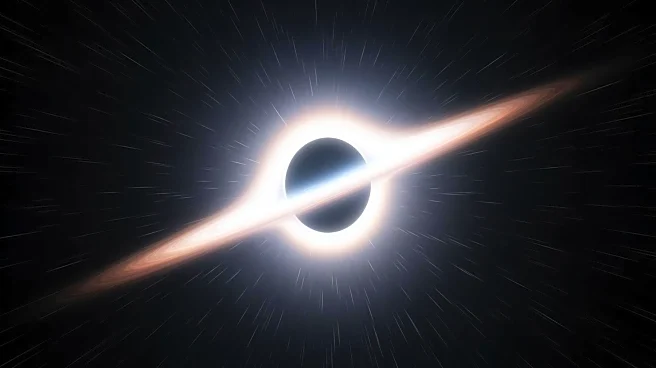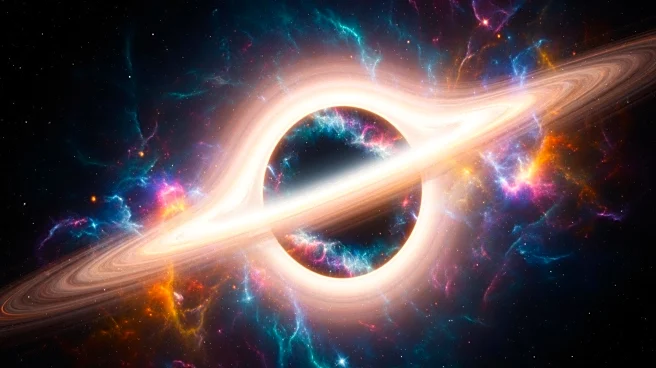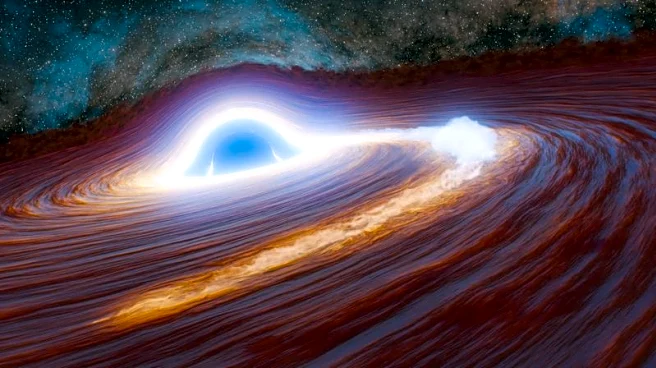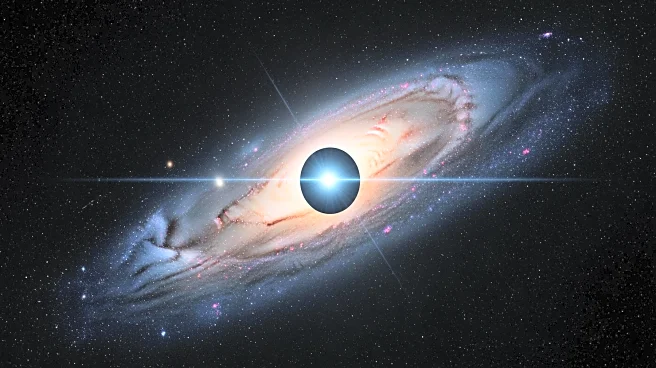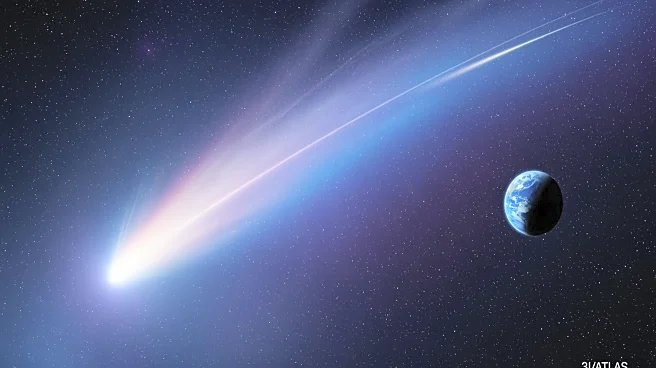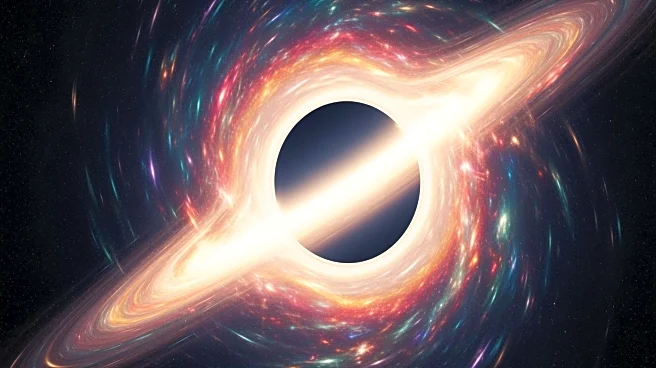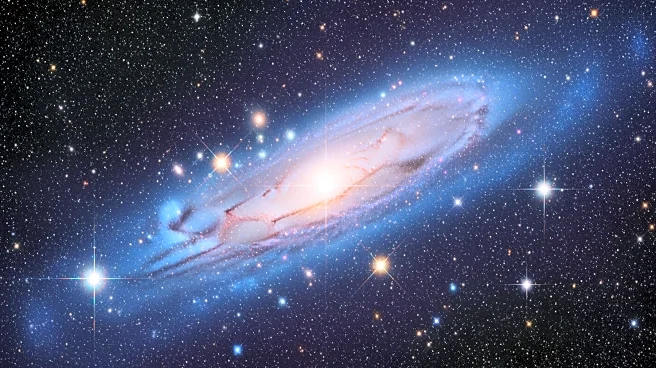What's Happening?
Astronomers have observed the brightest flare ever recorded from a supermassive black hole, resulting from a tidal disruption event (TDE) where a massive star was torn apart. This event, nicknamed 'Superman,'
occurred nearly 20 billion light years away in an active galactic nucleus (AGN). The flare's brightness was initially underestimated until follow-up observations in 2023 revealed its true distance and intensity. The flare increased the AGN's brightness by a factor of 40, suggesting the star involved was at least 30 times the mass of the sun. This discovery provides new insights into the dynamic environments around supermassive black holes.
Why It's Important?
The observation of such a powerful flare offers significant insights into the behavior of supermassive black holes and the environments surrounding them. Understanding TDEs in AGNs can help astronomers differentiate between various sources of variability in these cosmic structures. This knowledge is crucial for developing models to identify future TDEs and could lead to a deeper understanding of the formation and evolution of galaxies. The event also confirms the existence of massive stars in the vicinity of supermassive black holes, which had been theorized but not directly observed.
What's Next?
As the flare continues to fade, astronomers will study it to gain further insights into the environment around supermassive black holes. This research could lead to the development of models for identifying TDEs in AGNs, aiding in the discovery of more such events. The findings may also prompt further investigations into the variability of AGNs, potentially leading to new discoveries about the nature of these cosmic phenomena.
